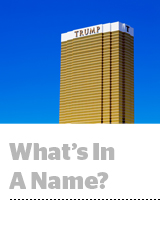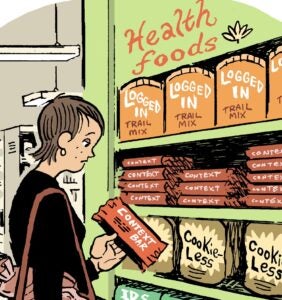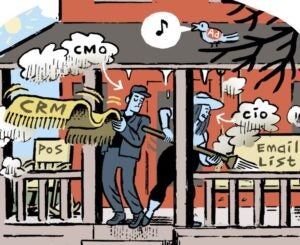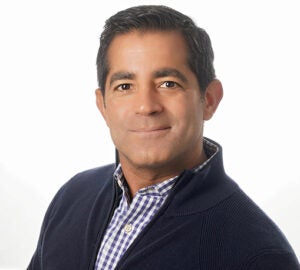 In campaign speeches, TV appearances and public statements, Donald Trump frequently boasts about his campaign’s low ad spending.
In campaign speeches, TV appearances and public statements, Donald Trump frequently boasts about his campaign’s low ad spending.
“I’ve spent no money and I’m No. 1,” he said recently on the “Today” show. “Other people have spent tens of millions of dollars and they’re floundering and doing poorly.”
Unfortunately for his opponents, this statement – unlike some others he’s made – is true. That’s left them grappling: Can their paid media overcome his dominance of earned coverage and organic social media?
“In terms of the changing dynamics between earned and paid, the way we communicate with individuals, younger people in particular, won’t be accomplished the way it’s always been done,” said Matt Oczkowski, director of product at the conservative data firm Cambridge Analytica and the former chief digital officer on Wisconsin Gov. Scott Walker’s presidential campaign.
An NBC report last week found that Jeb Bush has spent roughly $33 million on TV and radio ads, while Trump’s $216,000 outlay is a fraction of his closest competitors’ spending, including Ben Carson’s.
Big TV buys have been mostly duds for candidates on both sides, including Republicans such as Bush and Ohio Gov. John Kasich and Democrat Hillary Clinton, according to Zac Moffatt, CEO of the Republican ad tech provider Targeted Victory. But there are more opportunities on other channels, although often even paid campaigns rely on earned media coverage, he said.
For instance, a paid media opportunity on Facebook or Twitter likely involves elevating a piece of earned media content. Josh Zeitz, the AppNexus VP of corporate communications who has a background in campaign press strategy, pointed to New Jersey Gov. Chris Christie, who paid to elevate news of an endorsement from the New Hampshire Union Leader on social media and then used it for fundraising.
The mutual reinforcement of paid and earned media is longstanding conventional wisdom in campaign circles, so there are few precedents for countering Trump’s earned-only blitzkrieg. Zeitz called Trump’s campaign “a wholly different phenomenon,” while Moffatt said, “Trump is a true anomaly in that he doesn’t spend at all.”
Trump’s most recent campaign filings indicate that he’s directed more than $500,000 in the third quarter to the company that manufactures his campaign’s popular “Make America Great Again” hats, which is more than double what he has spent on advertising.
To fill every online news cycle as Trump has requires a commitment to rapid-response and untested messaging that flies in the face of most paid media campaigns, which are typically put through more extensive vetting. At least that’s the feeling of Vincent Harris, CEO of the Republican digital shop Harris Media and chief digital strategist on Sen. Rand Paul’s (R-Ky.) presidential campaign.
“In the age of digital-first, earned media and producing content that can generate earned media is very important,” Harris said. “More time and attention is spent in campaigns now working on earned media.”
The digital marriage of paid and earned media is a long way from traditional methods, such as campaigns poaching news headlines for their ads.
“How you break through is by putting ad dollars behind earned content,” said Dallas Lawrence, SVP of corporate communications at Rubicon Project and a former Republican communications director.
That’s easier said than done, however.
Trump shooting from the hip on Twitter and making news by saying something controversial may work for him, Moffatt said, but can’t be replicated by other politicians.
On non-Trump campaigns, even earned media often requires an upfront investment. For example, Sen. Ted Cruz (R-Texas) aired a controversial TV ad last week in Iowa – an especially important primary state since it’s the first to vote – which in turn gained earned media coverage.
Conserving budgets by using hot-button paid media to stimulate press coverage is practically an American tradition, but it’s still a drain on funds – for everyone except Trump.
“In theory, if Trump can sustain his share of voice, he can run (his competitors) out of resources,” Zeitz said.
Even for candidates like Carson, who have seen digital campaigns pay off handsomely, committing to its social media strategy will require expenditures “measured in tens of millions of dollars,” according to sources with knowledge of the campaign’s digital spending.
Plus, despite putting millions behind his messaging on Facebook, Carson still only outperforms non-Trump candidates and closes the gap with Trump on the platform.
Lawrence doesn’t expect the current field of candidates to crack Trump’s lead until it’s been winnowed down, allowing for consolidated support to topple Trump’s roughly 35% Republican support.
Moffatt is less confident that peripheral candidates will quit, but said there are successful examples of candidates eating into a lead as large as Trump’s without overspending. He cited the Cruz campaign in particular for its digital targeting and volunteer development, not to mention a new mobile app, all of which have helped propel him into competition for Iowa.
Bush’s attempt to overcome Trump’s earned media volume with paid media volume was an apparent waste of advertising dollars. But less visible campaigns with targeted goals have proven their effect, including Carson’s efforts on Facebook or Cruz’s full-funnel strategy in Iowa, Moffatt said.
But when you consider that the most effective outreach strategies so far have barely blunted Trump’s stranglehold on Republican polls, it’s tough to envision a candidate finding a perfect solution.
Those in Washington, DC, often refer to earned media as “oxygen” because it’s both essential and mundane. Now many prominent first-time presidential candidates are gasping for breath because there’s a raging fire called Donald Trump that’s sucking all the oxygen out of the room, cheerfully reducing it to ash and smoke.














